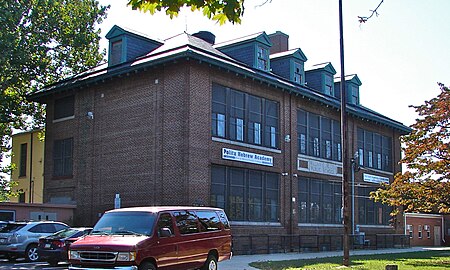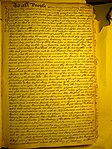Politz Hebrew Academy
1915 establishments in PennsylvaniaColonial Revival architecture in PennsylvaniaJewish schools in the United StatesNortheast PhiladelphiaPhiladelphia County, Pennsylvania Registered Historic Place stubs ... and 3 more
Religious schools in PennsylvaniaSchool buildings completed in 1915School buildings on the National Register of Historic Places in Philadelphia

Politz Hebrew Academy, formerly known as William C. Jacobs School and Fayette School, is a historic school located in the Bustleton neighborhood of Philadelphia, Pennsylvania. The building consists of an original section designed by Samuel Sloan in 1855, and the main building built in 1915. The original building is a two-story, stone building sheathed in stucco. The 1915 building is a 2+1⁄2-story, three-bay, rectangular brick building in the Colonial Revival style. It features a hipped roof and gable dormers.The building was added to the National Register of Historic Places in 1988.
Excerpt from the Wikipedia article Politz Hebrew Academy (License: CC BY-SA 3.0, Authors, Images).Politz Hebrew Academy
Old Bustleton Avenue, Philadelphia
Geographical coordinates (GPS) Address Phone number Website External links Nearby Places Show on map
Geographical coordinates (GPS)
| Latitude | Longitude |
|---|---|
| N 40.0805 ° | E -75.0391 ° |
Address
Politz Hebrew Academy
Old Bustleton Avenue 9225
19115 Philadelphia
Pennsylvania, United States
Open on Google Maps






